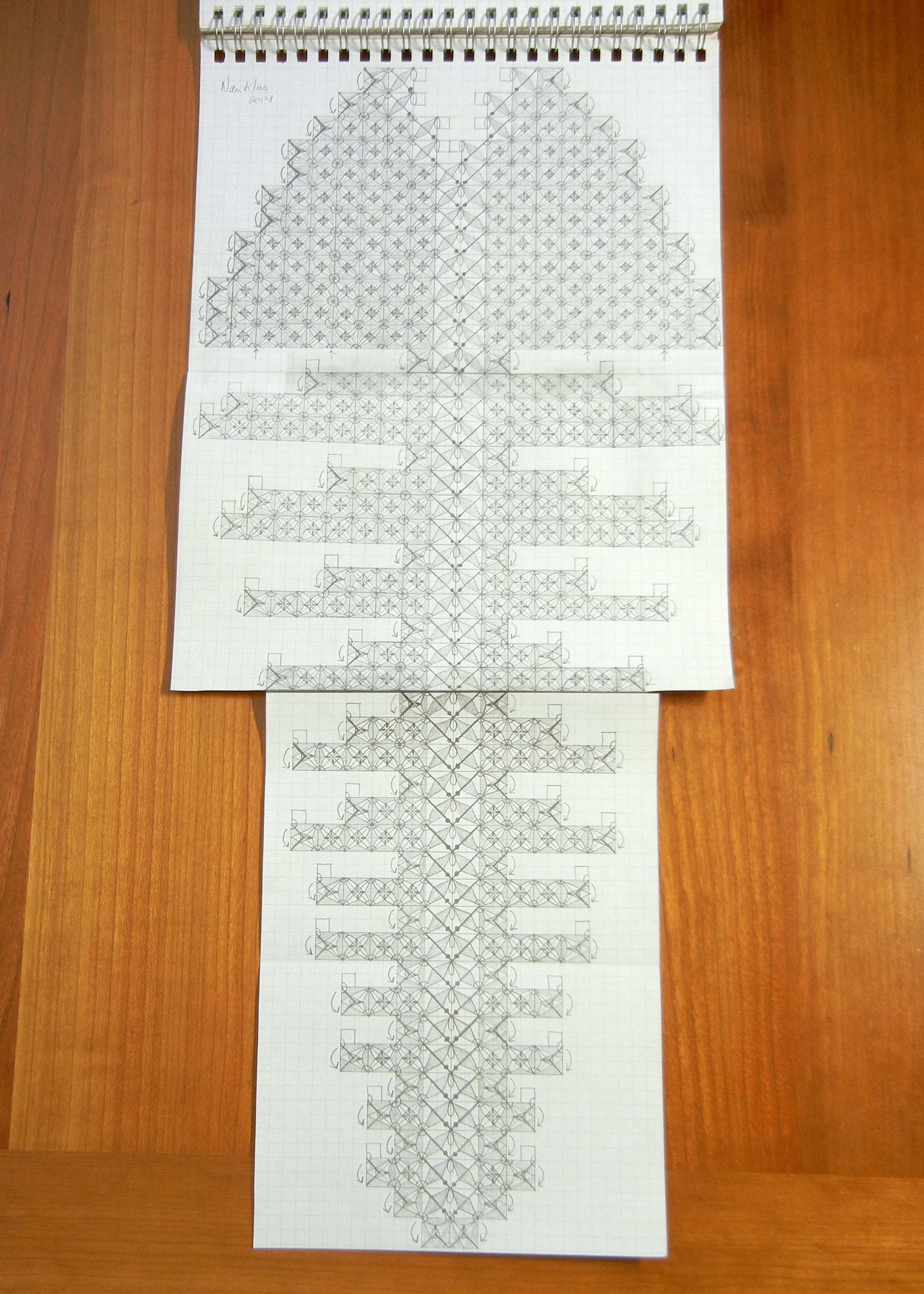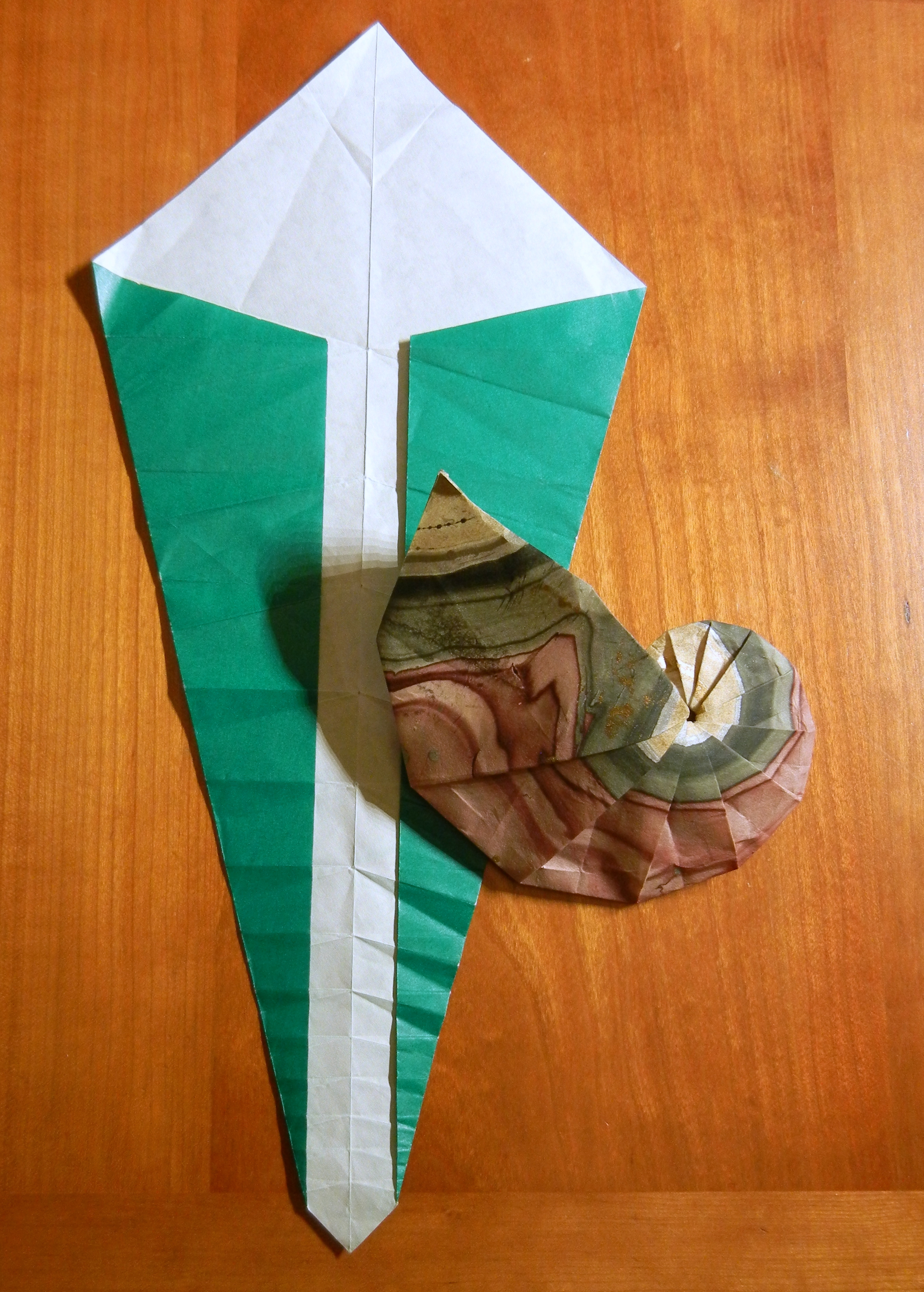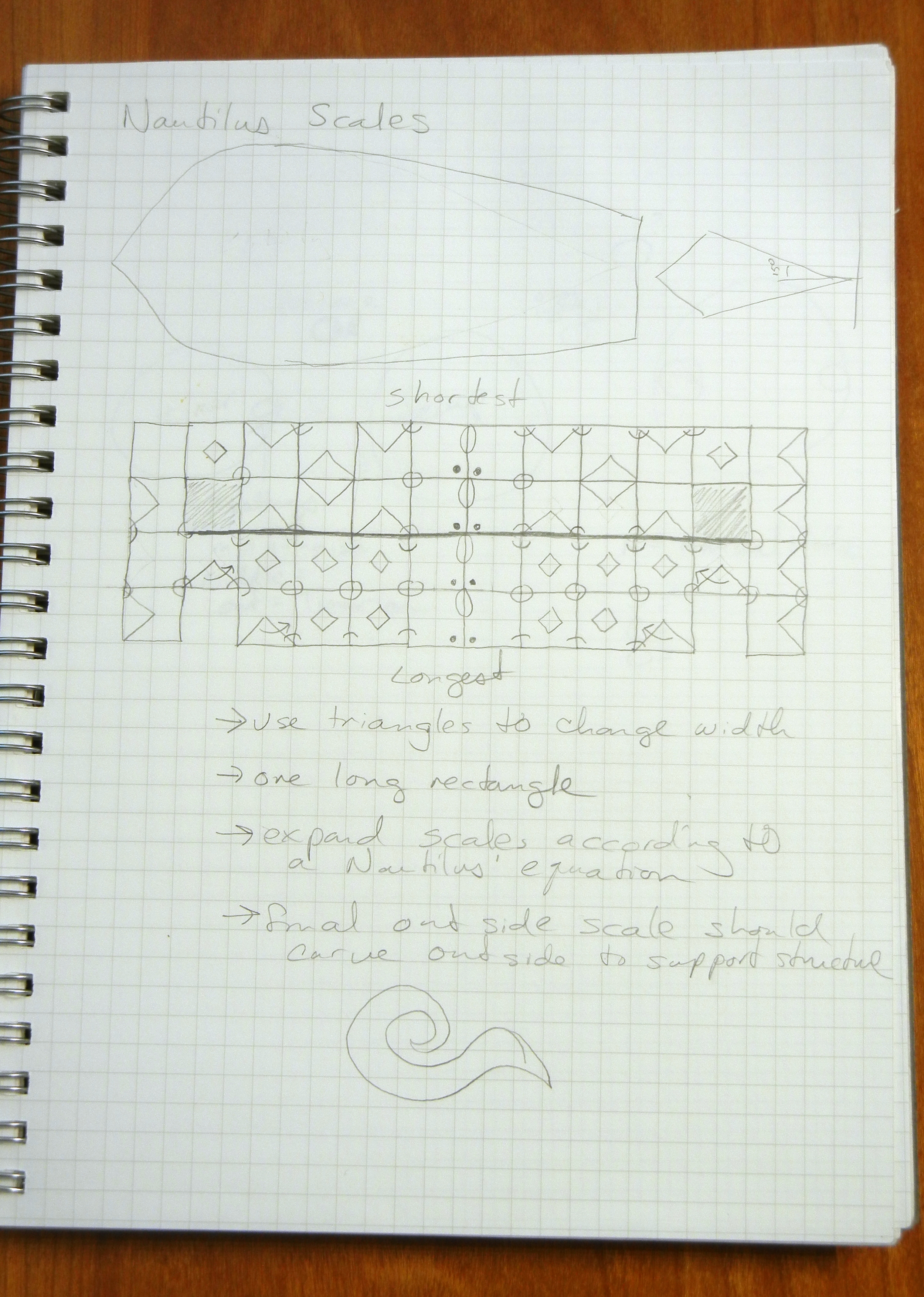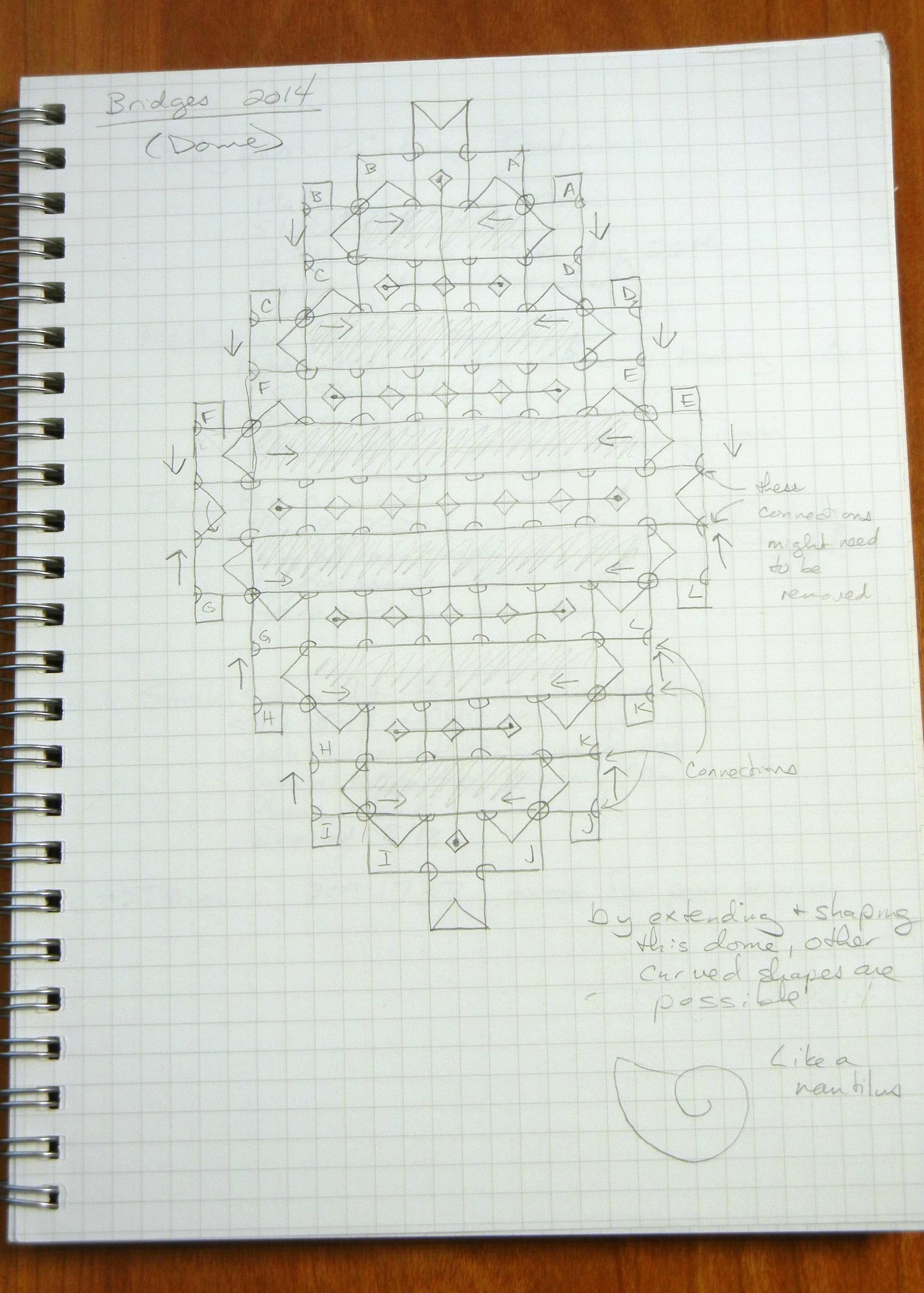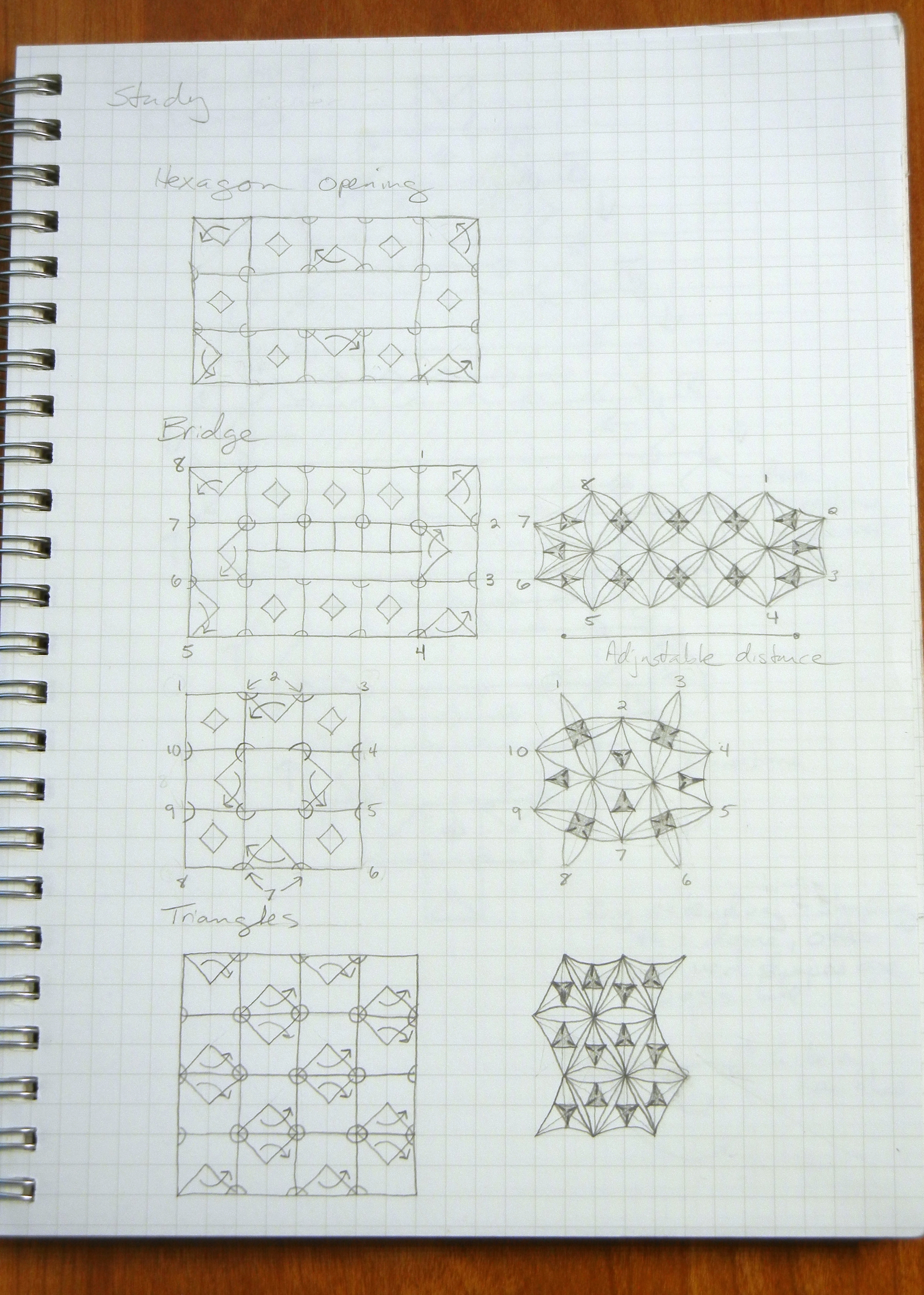I have always loved the geometry of shells. The way a simple curve of calcium carbonate becomes a dome, then the dome curves upon itself to form the interior spaces. So simple, yet infinitely variable.
One night in August, in an effort to simplify future designs, I had begun to catalog different shapes and forms. Of course I couldn't just catalog my known forms and later that evening I sketched a little bridge. The little bridge caught my attention, but I didn't know how I should use it yet. Later, on August 21st, the little sketch of a curved bridge became a series of bridges of different lengths/heights connected on the outside. I had found a segmented dome with outside pivot points. At this point I started playing with the shape in my head, adding and removing pieces, trying to see what I could do with the shape.
Of course I found myself unable to sleep that night. I tossed and turned trying to shake the dome design spinning in my head. I knew I was close to something, but I felt it was still far away. Suddenly, long after I should have been asleep, I narrowed one end of my dome, curved it on itself and had a rough nautilus design.
Since then I have been working on the details. The angle of the bridge pieces, the sizes of the segments, the angles of the whole, the connection points, the contrasting central ridge of cranes, and so many more. At one point, stuck on a few of the angles I remembered Montroll and Lang's Chambered Nautilus (I folded one almost a decade ago). Their design was a crucial shortcut to a few of the more challenging angles.
